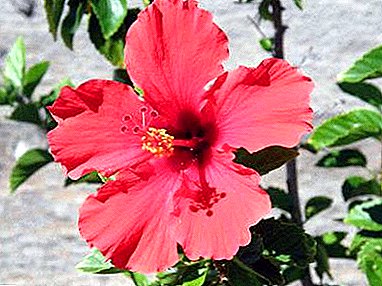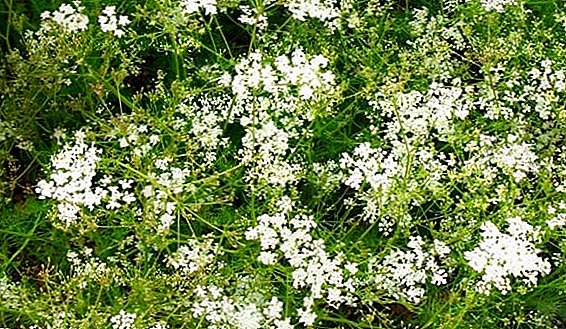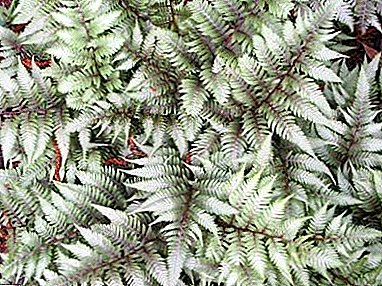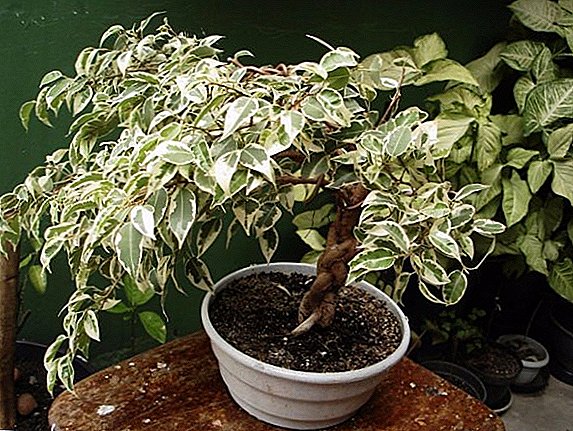 Ficus benjamina - This is an evergreen plant of the mulberry family. In nature, the plant reaches 25 meters in height. Ficus is accustomed to a warm and humid climate - India, China, Southeast Asia, the Philippines and northern Australia. The plant got its name in honor of the English botanist Benjamin Jackson.
Ficus benjamina - This is an evergreen plant of the mulberry family. In nature, the plant reaches 25 meters in height. Ficus is accustomed to a warm and humid climate - India, China, Southeast Asia, the Philippines and northern Australia. The plant got its name in honor of the English botanist Benjamin Jackson.
Interesting fact! In Bangkok, Ficus Benjamin is revered as a symbol of the city.
The main pests of ficus Benjamin
Ficus benjamina prone to such pests and diseases.
 Shchitovka. This unpleasant insect harms the plant not only by drinking ficus juice, but also by the products of its vital activity. On the traces left by it the soot mushroom expands. To eliminate the parasite, process the leaves and branches of the plant with a special solution - Aktellik. The fungus can be removed with a soap solution.
Shchitovka. This unpleasant insect harms the plant not only by drinking ficus juice, but also by the products of its vital activity. On the traces left by it the soot mushroom expands. To eliminate the parasite, process the leaves and branches of the plant with a special solution - Aktellik. The fungus can be removed with a soap solution.
Spider mites. They leave traces of bites and cobwebs on the leaves, after which the leaves wither and fall. With ticks are struggling with protective solutions - Fitoverm, Aktellik and Sunmite.
Thrips. About the appearance of these insects informs white plaque appeared on the leaves of ficus. On the reverse side of the leaves, insects lay eggs, so the plant must be temporarily removed from other vases. Thrips are killed with insecticides, such as Aktara and Mospilan.
Aphid. This parasite also nibbles the leaves and lays on the lower sides of the egg. Insecticides will also help to get rid of aphids on Benjamin's ficus.
Mealybug. On the ficus the parasite settles on the whole plant. It needs to be brushed off the surfaces with a brush, and then rinsed the plant. Be sure to inspect the adjacent pots. After the "bath" process ficus Aktellik. It is advisable to repeat the procedure after three days.
Signs of ficus disease
The main signs of ficus disease immediately draw attention to themselves. Since the plant is tender, any brute force or insufficient care will immediately affect its appearance and lead to diseases.
Did you know? To give a ficus a decorative look, plant several shoots together, braiding them in a braid. As they grow, the trunks grow and transform into interesting growths.

Drafts, sudden changes in temperature, watering with too cold water and a lack of light will lead to wilting and falling off of the leaves. Insufficient humidity and hot air will cause the ends of the leaves to dry. This feature may also indicate fertilizer bleeding.
About the lack of fertilizer say a weakened plant, the leaves of which are slowly growing. It will help fertilizer with a nitrogen content. The so-called dropsy is formed as a result of excessive watering of ficus. Weak shoots and damaged leaves indicate excessive fertilization with nitrogen.
Root rot, and how to get rid of it
 The most unpleasant disease can be considered root rot. This fungal disease is not always cured. If you notice a crust with a touch on the soil of ficus, you need to dig up the plant and inspect the roots. If they are too dark and soft, reanimate the plant will not succeed. If the roots are elastic to the touch and light in color, proceed to the rescue of the diseased. It is necessary:
The most unpleasant disease can be considered root rot. This fungal disease is not always cured. If you notice a crust with a touch on the soil of ficus, you need to dig up the plant and inspect the roots. If they are too dark and soft, reanimate the plant will not succeed. If the roots are elastic to the touch and light in color, proceed to the rescue of the diseased. It is necessary:
- Remove all darkened roots, as well as all the leaves and branches with traces of the disease.
- If the crown of ficus is small, it is necessary to thin it so that the plant spends energy only to get rid of the disease.
- Replant the ficus in the new soil and treat with a solution of carbendazim fungicide.
- Put the plant in a bright place, but not in the sun.
- Since illnesses cause an excess of moisture all the time, their treatment begins with compliance with watering norms. To find out that the plant wants moisture, pick the soil with a stick and see how dry it is. If the wet layer is at a depth of 4 cm, you can water it.
Important! Benjamin Ficus does not like frequent transplants, so the procedure should be performed only when his roots begin to crawl out of the pot.
Leaf spot, how to remove stains
 Spots on ficus leaves appear as a result of improper care, but they can also be caused by such diseases as anthracycnosis and cercosporosis.
Spots on ficus leaves appear as a result of improper care, but they can also be caused by such diseases as anthracycnosis and cercosporosis.
Brown spots
The appearance of brown spots can cause serious illness and even loss of crown. Let us see why brown spots appear on ficus leaves. This may be due to the high temperature in the room, dry air and late watering. The treatment is simple - the right care and maintenance of ficus. As well as fertilizing, but after treatment.
Attention! Observe a moderate temperature in a place where there is a ficus. He loves neither heat nor cold.
Gray leaf decay
Gray rot called bortritis. This plaque appears due to frequent watering of the plant. Moldy areas of the tree are removed and the watering frequency is reduced. A pot with a pot should preferably be kept separate from other plants for the duration of treatment.
Black bloom on the sheets
 Black bloom also provokes excessive moisture. Spores of the fungus with the scientific name Cercospora are causing the disease. Also provoke this fungus can shield on ficus. The treatment is to get rid of parasites and reduce irrigation. After this, it is necessary to treat the ficus with a solution that destroys the fungus.
Black bloom also provokes excessive moisture. Spores of the fungus with the scientific name Cercospora are causing the disease. Also provoke this fungus can shield on ficus. The treatment is to get rid of parasites and reduce irrigation. After this, it is necessary to treat the ficus with a solution that destroys the fungus.
Brown rot
Brown rot begins with the appearance of small dark brown spots. Gradually, they grow, forming ulcers. The leaves fall off and the plant may die. These pathogenic fungi are called anthracnose. Ficus anthracnose is treated with solutions containing copper. At the time of treatment, isolate the plant from other vases. Treat with ficus, after removing the affected leaves. Depending on the drug you choose, repeat the treatment, and the frequency of the procedures, find out in the instructions for the solution.
Interesting! In Sri Lanka, in the royal garden "Peradeniya" grows 150-year-old ficus. The area of its crown is about 2.5 square meters, and its shape resembles a big turtle.To avoid illnesses of a ficus and to grow up a strong big plant the correct maintenance and care of it will help. His health depends on your attention.












